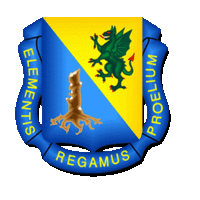- United States Army CBRN School
-
The United States Army CBRN School, located at Fort Leonard Wood, Missouri is the recognized world leader in training for military Chemical, Biological, Radiological, and Nuclear (CBRN) defense.[citation needed] In accordance with U.S. Federal Law, Fort Leonard Wood, Missouri is designated the central location for all of the Department of Defense's CBRN Operations Training.
Contents
Training Facilities
The Army CBRN School provides numerous courses for officers, Non-commissioned Officers and Initial Entry Soldiers, ranging from highly technical to the more general in nature. Numerous international officers also send students to train at the CBRN School. Additionally, the US Air Force, US Navy, US Coast Guard and US Marine Corps all also maintain training elements at Fort Leonard Wood who, in partnerships with the Army CBRN School, train their personnel in CBRN operations.
Fort Leonard Wood and the Army CBRN School have world-class facilities in which to conduct training. Perhaps the most famous[citation needed] is the Chemical Defense Training Facility (or CDTF) where military students from across the globe train and become familiar with actual nerve agents in realistic scenarios, and also conduct training with radiological isotopes and inert biological agents. The Edwin R. Bradley Radiological Teaching Laboratories is one of the very few radiological teaching laboratories licensed by the NRC in the Department of Defense. It provides a variety of training in radiological and nuclear defense under the supervision of credentialed scientists.
The newest facility at the CBRN School is the Lieutenant Joseph Terry CBRN Training Facility. Opened in November 2007, The 1LT Joseph Terry Chemical, Biological, Radiological, Nuclear (CBRN) Responder Training Facility occupies approximately 22.5 acres (91,000 m2) and provides a state-of-the-art CBRN Responder Training Campus for Inter-Service and other Agencies as requested. The US Army CBRN School is the lead for all DoD CBRN Response Training. This facility provides unmatched training opportunities in the fields of CBRN Consequence Management, Hazardous Materials Incident Response, Realistic training venues and other CBRN Response arenas as required. The CBRN School also provides training in Sensitive Site Assessment and Exploitation.
In addition to training, the CBRN School also develops doctrine for Operations, researches and develops materiel requirements, and conducts joint service experimentation as the Joint Combat Developer for the Department of Defense's Chemical and Biological Defense Program.
Official Name Change
On January 11, 2008, The U.S. Army Chemical School was re-named as The U.S. Army Chemical, Biological, Radiological and Nuclear School (USACBRNS.) The reason for the name change was to encompass, in the title of the school, the wide range of training and expertise maintained by the U.S. Army Chemical Corps.
Command
The Commandant of the U.S. Army CBRN School is COL Vance P. Visser. The Regimental Command Sergeant Major is CSM Ted A. Lopez.
See also
- Army Gas School
- Human experimentation in the United States
External links
- U.S. Army CBRN School official website.
- Fort Leonard Wood Army Training Center official website.
Sub-commands Accessions Command · Center for Army Lessons Learned · Combined Arms Center · Combined Arms Support Command / Sustainment Center of Excellence · TRADOC Analysis Center

Installations Schools Air Assault School · Air Defense Artillery School · Airborne School · Armor School · Aviation School · Basic Training · CBRN School · Sniper School · Combatives School · Command and General Staff College · Defense Language Institute · Engineer School · Field Artillery School · Infantry School · Intelligence Center · Jumpmaster School · Army Logistics University · Mountain Warfare School · Officer Candidate School · Pathfinder School · Prime Power School · Quartermaster School · Ranger School · School of Advanced Military Studies · Sergeants Major Academy · Special Forces Qualification Course · Soldier Support Institute · War College · Warrant Officer Candidate School · United States Military Academy (West Point)
Categories:- United States Army schools
Wikimedia Foundation. 2010.


